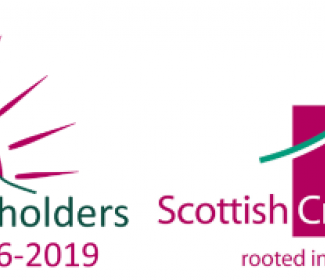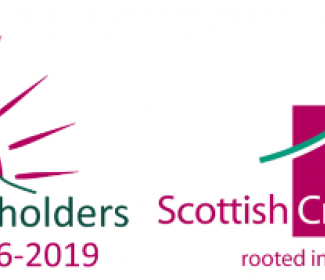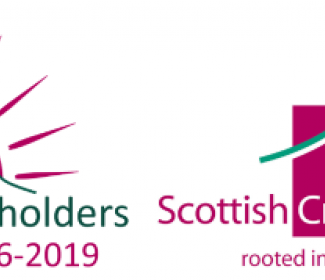Argyll: Animal Husbandry Course
Argyll: Animal Husbandry Course

Kilmartin Museum, Kilmartin, Argyll
Animal Husbandry Course
By the end of this course, you will be able to correctly & safely catch, restrain & perform a health check on sheep, pigs, goats & poultry as well as gaining ‘hands on’ experience for routine healthcare procedures. This will cover techniques involved in routine animal husbandry which will include; foot trimming, shearing, ear tagging, milking (Goats), administering medication.
You will also handle & examine adult hens, chicks & young waterfowl; learn how to sex chicks; apply leg rings; clip wing feathers & spurs. There will also be an introduction to incubators & egg candling.
You must bring your own wellies, waterproofs, clean overalls or old clothes & a packed lunch. Tea/coffee & cold drinks will be provided.
***Participants must check that their tetanus is up to date***
Local Course Director: Julia Hamilton
Tutors: Claire Shorthose (BVMS MRCVS)
Contact: training@crofting.org to book your place!
Related content
-
Horticulture Course
Morning session to be held at Kilmartin Museum.
Topics covered include how to...:
...recognise common crop pest & disease & deal with this in an environmentally
sustainable way.
...organise the yearly growing calendar to prevent, wherever possible pest & disease attack.
...protect crops from pest & disease attack (prevention much cheaper & environmentally sustainable than cure!)
...understand a four year crop rotation including plant families & plant requirements.
...get to grips with plant family association with pest & disease.
...produce crops undercover including polytunnels, greenhouses & cold frames.Afternoon site visit & tour of polytunnels.
Discuss & learn about growing crops under cover: polytunnel, greenhouse, cold frames.
Also suitable tools used. Fruit growing will also be shown & discussedLocal Course Director: Julia Hamilton
Tutor: Patsy Dyer and Laura SkeltonContact: training@crofting.org to book your place!
-
An introduction to Scottish agriculture directly related to crofters and smallholders. Peer to peer support and a face-to-face training event with industry experts to give you a step up to starting out in crofting, taking on a croft or to update your knowledge and develop your crofting business.
(Limited fully funded places available for anyone aged 16-25.)Course synopsis:
THEME 1: EVALUATING AND AQUIRING A CROFT (Eilidh Ross)
Based on National Occupational Standards LANCSH1, LANCSH3
To equip any would be crofters or new crofters with a broad, basic knowledge of statutory functions and regulations relating to land acquisition, planning and development.
To signpost people to the places where they can find crofts for sale, rent and register interest in a croft.
To give a grounding knowledge on the statutory and regulatory functions of the Crofting Commission.THEME 2: AGRICULTURAL SUBSIDIES, RECORD KEEPING AND RETURNS (Ruth Archer)
Based on National Occupational Standards BAB121 and BAB122
To gain an understanding of minimum holding size for IACS, CPH numbers, herd/flock numbers and where to register your holding. To understand IACS maps and when you require a land maintenance request form.
To equip any would be, or new entrant crofters with sufficient basic knowledge of how to prepare and make agricultural returns, applications and claims, and where to seek further advice or help if required.
Keeping records relating to land management (ferts/agri chemicals and pasture seeding), livestock records and movement of livestock (Cattle, Sheep, Pigs and Poultry) – (a very basic understanding of compliance requirements and what to expect at an inspection as this will be more detailed in livestock lecture).
Statutory compliance, GAEC, SMRs, Health, Safety and Environment.THEME 3: CROFT LAND MANAGEMENT (Stephen Varwell)
Based on National Occupational Standards LANCS70, LANCSH3, LANEM15, LANAgM8
To identify the key characteristics of croft land use: topography, soil type, weather, different habitats (machair, in-bye, upland and hill systems).
To highlight practical considerations when setting up a croft business: land type, size, buildings, apportionments and common grazing accessibility.
To develop an awareness of environmental best practice and a basic understanding of statutory environmental designations at a local, national and EU level and how these could affect croft and management and where to seek further advice or guidance.
To understand habitat management and creation in a crofting context.THEME 4: CROFT LIVESTOCK (Gwen Jensen)
Based on National Occupational Standards LANAgM3, LANAgM11, LANAgM12, LANAGM4, LANLP39, Administer Agricultural Records
To understand the theory of animal Welfare, the 5 animal freedoms and the safe handling and restraint of animals for movement and inspection.
An intro to breed characteristics in sheep, cattle, pigs and poultry, native vs non-native advantages and disadvantages, nutrition and suitability to a crofting system.
To understand record keeping and timescales for births, movements and deaths (all species) and where to seek further info or advice.
Animal health, welfare and biosecurity and where to seek further advice and information.THEME 5: CROFTING HORTICULTURE AND AGRO FORESTRY (Maggie Sutherland)
Based on National Occupational Standards LANCSH3, LANCS32, LANH14, LANPH8
To understand the role of site selection, soil, topography and weather for horticulture and small scale woodlands and shelterbelts.
To understand the role of small scale forestry planting in crofting and agricultural systems, shelterbelts, habitat management and small scale silvicultural production. Refer to grants available and signpost for further info and advice from FCS and ruralpayments.org.
Small scale tree planting, ground preparation and cropping maintenance. Timing, site suitability and species of trees. Harvesting, coppicing and natural re-gen.
To understand the role of field vegetable horticultural production, to understand the role of polytunnel production in a crofting context.
Plan and prepare the growing media, provision of nutrients for crops and plants: Composting, seaweeds, organic matter, provision of water for crops and plants.
Dealing with pests and disease silvicultural and horticultural.Contact: training@crofting.org to book your place!
-
An introduction to Scottish agriculture directly related to crofters and smallholders. Peer to peer support and a face-to-face training event with industry experts to give you a step up to starting out in crofting, taking on a croft or to update your knowledge and develop your crofting business.
(Limited fully funded places available for anyone aged 16-25.)Course synopsis:
THEME 1: EVALUATING AND AQUIRING A CROFT (Eilidh Ross)
Based on National Occupational Standards LANCSH1, LANCSH3
To equip any would be crofters or new crofters with a broad, basic knowledge of statutory functions and regulations relating to land acquisition, planning and development.
To signpost people to the places where they can find crofts for sale, rent and register interest in a croft.
To give a grounding knowledge on the statutory and regulatory functions of the Crofting Commission.THEME 2: AGRICULTURAL SUBSIDIES, RECORD KEEPING AND RETURNS (Ruth Archer)
Based on National Occupational Standards BAB121 and BAB122
To gain an understanding of minimum holding size for IACS, CPH numbers, herd/flock numbers and where to register your holding. To understand IACS maps and when you require a land maintenance request form.
To equip any would be, or new entrant crofters with sufficient basic knowledge of how to prepare and make agricultural returns, applications and claims, and where to seek further advice or help if required.
Keeping records relating to land management (ferts/agri chemicals and pasture seeding), livestock records and movement of livestock (Cattle, Sheep, Pigs and Poultry) – (a very basic understanding of compliance requirements and what to expect at an inspection as this will be more detailed in livestock lecture).
Statutory compliance, GAEC, SMRs, Health, Safety and Environment.THEME 3: CROFT LAND MANAGEMENT (Stephen Varwell)
Based on National Occupational Standards LANCS70, LANCSH3, LANEM15, LANAgM8
To identify the key characteristics of croft land use: topography, soil type, weather, different habitats (machair, in-bye, upland and hill systems).
To highlight practical considerations when setting up a croft business: land type, size, buildings, apportionments and common grazing accessibility.
To develop an awareness of environmental best practice and a basic understanding of statutory environmental designations at a local, national and EU level and how these could affect croft and management and where to seek further advice or guidance.
To understand habitat management and creation in a crofting context.THEME 4: CROFT LIVESTOCK (Gwen Jensen)
Based on National Occupational Standards LANAgM3, LANAgM11, LANAgM12, LANAGM4, LANLP39, Administer Agricultural Records
To understand the theory of animal Welfare, the 5 animal freedoms and the safe handling and restraint of animals for movement and inspection.
An intro to breed characteristics in sheep, cattle, pigs and poultry, native vs non-native advantages and disadvantages, nutrition and suitability to a crofting system.
To understand record keeping and timescales for births, movements and deaths (all species) and where to seek further info or advice.
Animal health, welfare and biosecurity and where to seek further advice and information.THEME 5: CROFTING HORTICULTURE AND AGRO FORESTRY (Maggie Sutherland)
Based on National Occupational Standards LANCSH3, LANCS32, LANH14, LANPH8
To understand the role of site selection, soil, topography and weather for horticulture and small scale woodlands and shelterbelts.
To understand the role of small scale forestry planting in crofting and agricultural systems, shelterbelts, habitat management and small scale silvicultural production. Refer to grants available and signpost for further info and advice from FCS and ruralpayments.org.
Small scale tree planting, ground preparation and cropping maintenance. Timing, site suitability and species of trees. Harvesting, coppicing and natural re-gen.
To understand the role of field vegetable horticultural production, to understand the role of polytunnel production in a crofting context.
Plan and prepare the growing media, provision of nutrients for crops and plants: Composting, seaweeds, organic matter, provision of water for crops and plants.
Dealing with pests and disease silvicultural and horticultural.Contact: training@crofting.org to book your place!


